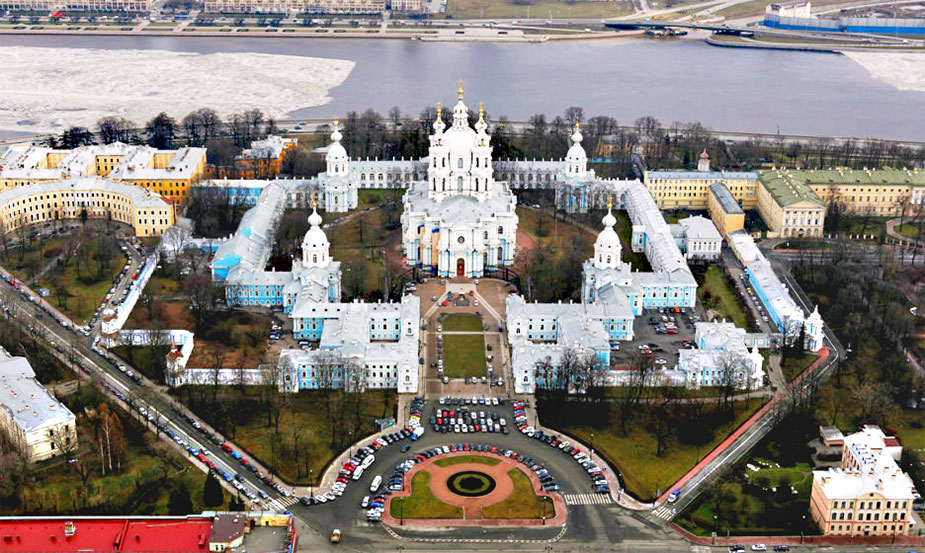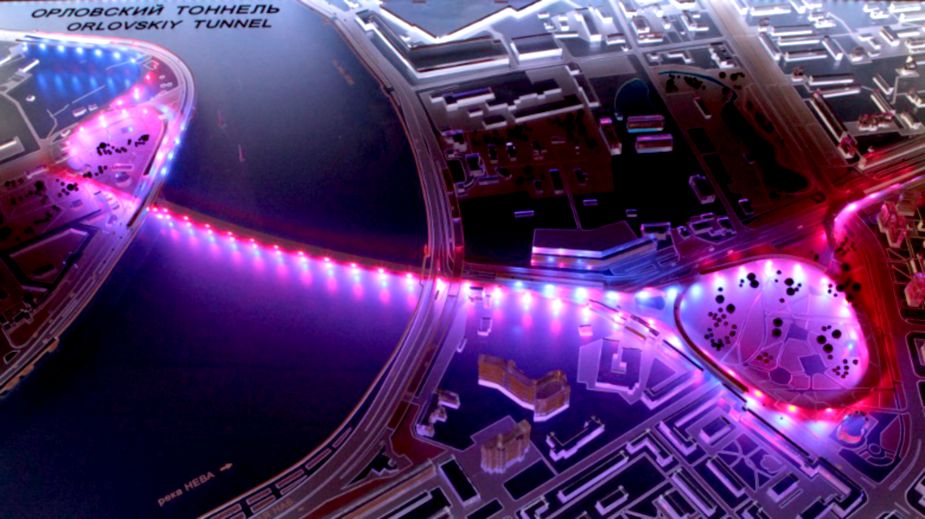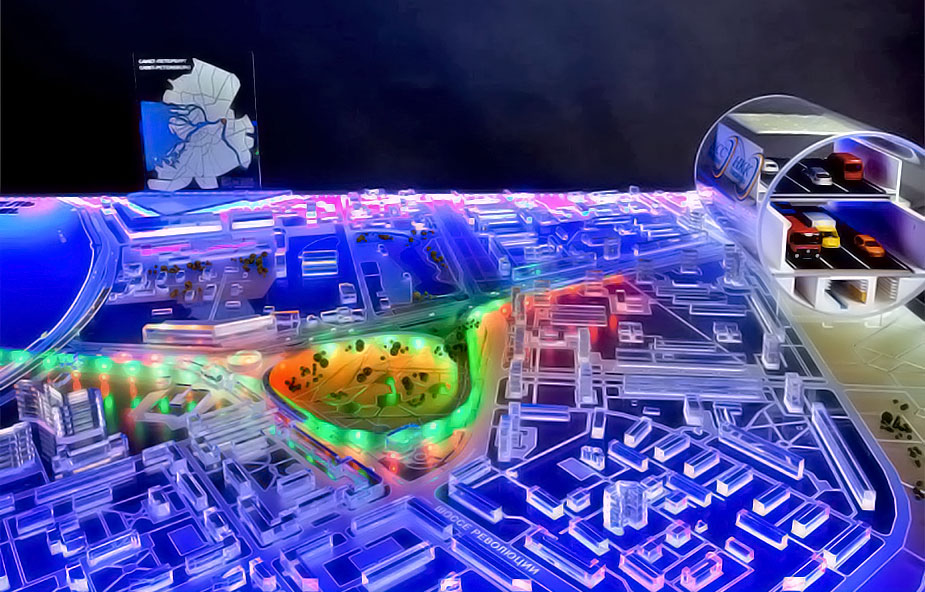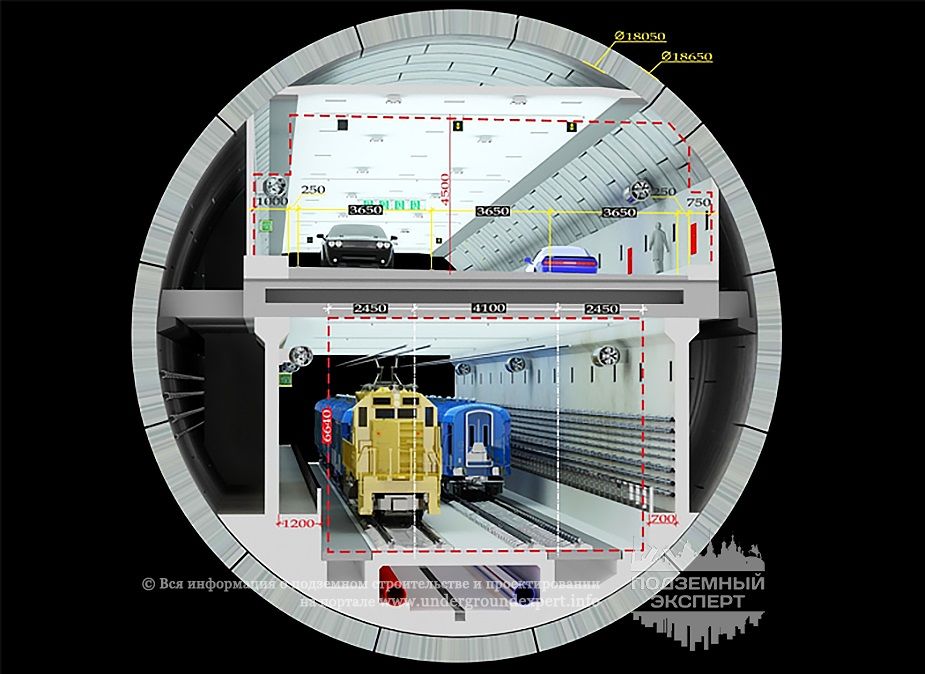Orlovsky tunnel in St. Petersburg: project never made
In early 2000, OAO NIPII Lenmetrogiprotrans and AO Metrogiprotrans developed the project of the Orlovsky tunnel under the wide and fast Neva River in the center of the second-largest city in Russia.

Tunnel’s entrance portal that was meant to be constructed near the Smolny Convent
AO Institut Giprostroymost – Sankt Petersburg also took part in the underwater passage project’s development. The project was reviewed and approved. There was preparation work for the international call for tender. However, the financial crises in 2008 interrupted this work, and the designers developed the second option – a deep tunnel implemented with the TBM.
There were talks to invite OAO Metrostroy (St. Petersburg) and Vinci S.A. (France) and create a construction consortium. The companies made a great impression while helping to overcome the flood that occurred at one of St. Petersburg metro sections.
The Orlovsky Tunnel would have connected Piskarevsky prospect and the Smolny embankment. The traffic was estimated as 60 thousand vehicles per 24 h. The investment was estimated at $1.6 billion. Sberbank of Russia was ready to cover the part of the cost.
The competition did not attract participants. Only one company applied. On March 24, 2010, the Government of St. Petersburg issued the special notice about the tunnel declaring that a certain concessional company was nominated for conducting the process. The Nevskaya Contsessionnaya Compania was a part of the construction group Vinci.
The implementation of the large infrastructure project seemed to be real. It could significantly improve the transport situation in the city. But with the new Governor coming, the City administration lacked interest in the project. Initially, the tunnel was meant to be completed in 2012, and then in 2015. Later the project was announced inexpedient.

The Orlovsky tunnel route. Source: novostroy.su
Background
The Governor Valentina Matrvientko discussed the Orlovsky tunnel with the leading TBM manufacturer Herrenknecht AG in 2010. The meeting included the head of the Sberbank of Russia, the former chancellor of Germany Gerhard Schroder, the CEO of the company meant to execute the plan and others.
Valentina Matvienko was informed about the state-of-art technologies. The Governor observed the TBM with a diameter of 16 meters. It was noted that the TBM with a diameter of 19 meters was needed to construct the Orlovsky tunnel. It could be the largest TBM in the world at that time.
According to the project, the Orlovsky tunnel would have had a length of 3,500 meters, with 1,000 meters begin underwater. The tunnel was planned as a double-decked tunnel with three lanes towards each side.
The Governor was content with the meeting’s results. A preliminary agreement was reached about the TBM manufacturing. The period for manufacturing was estimated at 2 years.

The Orlovsky tunnel miniature
Construction period
The construction was planned to begin in 2011. The geotechnical work started in august of 2010. The general designer was ZAO Institut Stroypoekt. The Italian company GeoData performed a risk analysis to choose the right location. The development of the project and its review were planned for 2011.
The responsible company should have provided the list of international companies to choose the independent engineer of the project. There were also talks with foreign companies about future tunnel engineering systems.

Large diameter tunnel
Technology
The construction work was meant to be implemented with the TBM produced by Herrehkhecht with a diameter of 19 meters. That was the most convenient and environmentally friendly option. The deepest point of the tunnel could be 50 meters under the Neva River’s bottom. The basements of the building in the nearest area were planned to be reinforced for the security reasons.
The design considered the ecological impact as a valuable factor. The future tunnel should have answered the highest international ecological standards.
According to the journal Vremya Vpered issued to celebrate the 70th anniversary of Lenmetrogiprotrans design institute.
Additional articles
Select an article of interest:
Mongolia designs new railway “Bohdan”
March 1, 2022
The construction of largest hydraulic tunnel has begun in Qatar
February 28, 2022
JSC "VO "Mashinoimport" supplied escalators for the Novosibirsk metro
December 22, 2021
Russian city Samara plans to build a metro
December 17, 2021
Tell us about our article to your friends,
sharing a link in a social network















Comments (0)
I hereby confirm that I am familiar with the privacy policy of
and agree to the processing of personal data. Read more